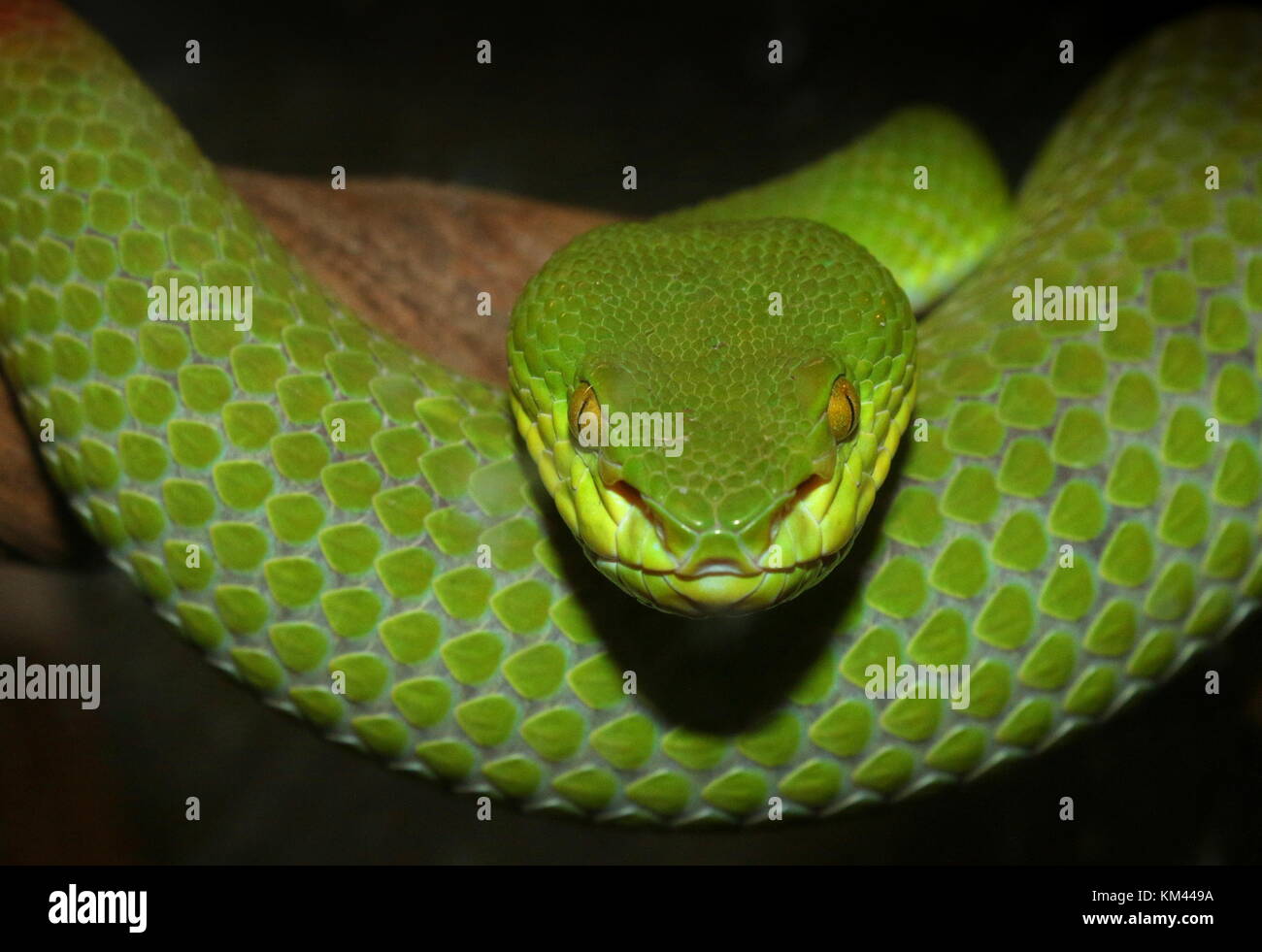

Sanibel Island, Florida: Ralph Curtis Books. A Photographic Guide to Snakes and other Reptiles of India. "Multiple causation of phylogeographical pattern as revealed by nested clade analysis of the bamboo viper ( Trimeresurus stejnegeri) within Taiwan". Creer S, Malhotra A, Thorpe RS, Chou WH (2001).^ a b c Gumprecht A, Tillack F, Orlov NL, Captain A, Ryabov S (2004)."Rare mutant yellow Taiwan bamboo pit viper spotted on trail".


White out pit vipers skin#
The wound site quickly swells, and the skin and muscle become black due to necrosis. Within a few minutes of being bitten, the surrounding flesh dies and turns black, highlighting the puncture wounds.

The wound usually feels extremely painful, as if it had been branded with a hot iron, and the pain does not subside until about 24 hours after being bitten. Trimeresurus stejnegeri has a potent hemotoxin. stejnegeri is forest, at altitudes from sea level to 2,000 m (6,600 ft). Fukien Province" by Pope & Pope (1933) (Fukien being the former romanization of Fujian). The type locality was originally listed as "Shaowu, Fukien Province, China", and later emended to "N.W. Trimeresurus stejnegeri is found in Northeast India) and Nepal through Myanmar and Laos to much of southern China ( Yunnan, Sichuan, Gansu, Jiangxi, Jiangsu, Hunan, Hubei, Guizhou, Guangxi, Guangdong, Hainan, Fujian, Anhui, Zhejiang), Vietnam, and Taiwan. stejnegeri include bamboo viper, Chinese tree viper, bamboo snake, Chinese green tree viper, Chinese bamboo viper, Stejneger's pit viper, Stejneger's palm viper, red tail snake, Stejneger's bamboo pitviper, Geographic range Yellow colored mutants have been reported. īamboo vipers are carnivores: they eat small rodents, birds, frogs, and lizards. The color pattern is bright to dark green above, pale green to whitish below, the two separated by a bright bicolored orange or brown (below) and white (above) (males) or bicolored or white only (females) ventrolateral stripe, which occupies the whole of the outermost scale row and a portion of the second row. The ventrals number 150–174, and the subcaudals are 54–77. There are 11–16 scales in a line between the supraoculars. The supraoculars are single, narrow, and sometimes divided by a transverse suture. There are 9–11 upper labials, of which the first are separated from nasal scales by a distinct suture. The dorsal scales are arranged in 21 longitudinal rows at midbody. The males have hemipenes that are short and spinose beyond the bifurcation. Trimeresurus stejnegeri grows to a maximum total length of 75 centimetres (30 in), which includes a tail length of 14.5 centimetres (5.7 in). The specific name, stejnegeri, is in honor of Leonhard Stejneger, the Norwegian-born, American herpetologist who worked at the Smithsonian Institution for over 60 years. For other common, non-scientific names, see § Common names below. Ĭommon names for this pit viper include Stejneger's pit viper, Chinese pit viper, Chinese green tree viper, bamboo viper, Chinese bamboo pitviper, 69 bamboo viper, and Chinese tree viper. Two subspecies are currently recognized, including the nominate subspecies described here. Trimeresurus stejnegeri is a species of venomous pit viper endemic to Asia.


 0 kommentar(er)
0 kommentar(er)
